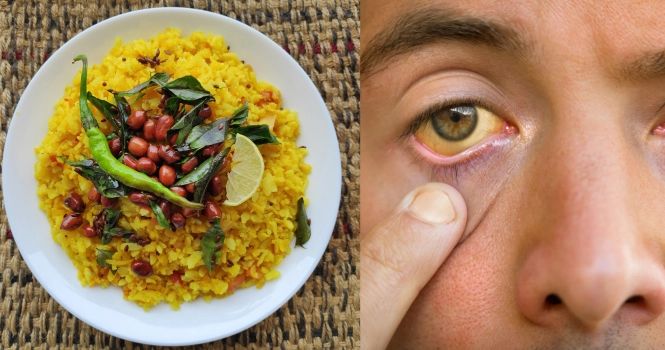Sweet Red Wine

What is Red Wine?
Red wine is an alcoholic beverage that is typically made from dark-colored, or “black”, grape varieties. The actual color of red wine can range from intense violet, typical of young wines, to brick red for mature wines, or brown for older red wines.
The juice from most purple grapes is actually greenish-white, and the red color comes from anthocyanin pigments present in the skin of the grape, which are extracted during the winemaking process, a practice known as maceration.
The flavor profiles of red wines can range greatly depending on the type of grape used, the region where it’s grown, and the specific techniques employed during vinification.
Some common types of red wines include the following, each with its distinct characteristics.
- Cabernet Sauvignon
- Merlot
- Pinot Noir
- Syrah
- Zinfandel
Red wine is often linked with several health benefits when consumed moderately, largely due to the presence of resveratrol, a type of polyphenol found in the skins of grapes. It’s important to note, however, that excessive consumption of red wine, like any alcoholic beverage, can lead to health problems.
Additionally, red wine plays a significant role in various cultures and is integral to many culinary traditions, often used in cooking and paired with a broad range of foods.
What is White Wine?
White wine is an alcoholic beverage typically produced from green or yellowish grapes, though it can also be made from red grapes with the skin and seeds removed to avoid coloration.
The flavor of white wine ranges from dry to sweet and can be light and crisp or rich and creamy, depending on grape variety and wine-making techniques.
Popular types of white wine include Chardonnay, Sauvignon Blanc, Riesling, and Pinot Grigio, each offering a distinct flavor profile.
For example, Chardonnay can be buttery and full-bodied, while Sauvignon Blanc is usually crisp, with hints of green and tropical fruits.
Riesling is known for its floral and sweet, yet high acidity characteristics, and Pinot Grigio usually presents a clean, dry, and light flavor.
The fermentation process of white wine differs from red wine; the grapes are pressed after harvesting, separating the juice from the skins, seeds, and solids.
This process prevents the tannins and pigments in the skins from entering the wine, leading to a lighter, more delicate flavor.
White wines are known for their versatility in pairing with a wide range of foods, from seafood and poultry to various cheeses and salads.
In moderation, white wine has also been associated with some health benefits, including improved cardiovascular health and antioxidant properties due to the presence of flavonoids and other polyphenols.
However, overconsumption can lead to adverse health effects.
Red Wine and White Wine Benefits
Red Wine Benefits:
1. Heart Health:
Red wine, in moderation, has long been thought of as heart-healthy. The alcohol and antioxidants, like resveratrol and flavonoids, can increase levels of high-density lipoprotein (HDL or “good” cholesterol) and protect against artery damage, which helps prevent heart disease.
2. Rich in Antioxidants:
Red wine is packed with antioxidants like flavonoid, resveratrol, and tannin, which help fight oxidative stress in the body.
3. May Improve Gut Health:
Some research suggests that moderate consumption of red wine can diversify the gut microbiota, which is beneficial for overall health.
4. May Reduce Risk of Stroke and Type 2 Diabetes:
Some studies suggest that moderate consumption of red wine could potentially reduce the risk of stroke and type 2 diabetes in some individuals. However, more research is needed to confirm these effects.
White Wine Benefits:
1. Heart Health:
Similar to red wine, moderate consumption of white wine may also improve heart health. White wine can raise the levels of HDL cholesterol, reducing the risk of heart disease.
2. Antioxidant Properties:
White wine contains antioxidants, though in lower quantities than red wine. These antioxidants, like those found in red wine, can help fight oxidative stress.
3. Improved Lung Function:
Some studies have suggested that moderate white wine consumption might be associated with better lung health due to its antioxidant properties.
4. Help in Weight Control:
White wine is slightly lower in calories than red wine, which could potentially make it a better choice for those looking to maintain or lose weight.
It’s important to stress that these benefits are associated with moderate consumption. Drinking too much of any type of alcohol can lead to serious health problems, including liver disease, heart disease, certain types of cancer, brain damage, and other issues.
The definition of ‘moderate’ can vary, but it is typically up to one drink per day for women and up to two drinks per day for men. Always consult with a healthcare provider to understand the implications of alcohol consumption on your health.
Calories per Serving and Glycemic Index and Glycemic Load
| Red Wine | White Wine | |
|---|---|---|
| Calories (per 5 oz serving) | ~125 | ~121 |
| Sugar (per 5 oz serving) | ~0.9 grams | ~1.4 grams |
| Glycemic Index (GI) | Low (0) | Low (0) |
| Glycemic Load (GL) | Low (0) | Low (0) |
| Benefits | Rich in polyphenols such as resveratrol, which may benefit heart health. It might also lower the risk of stroke and type 2 diabetes. | Typically lower in calories and may contain some antioxidants like flavonoids. Some studies suggest moderate consumption might improve heart health. |
How Much Red Wine Per Day Is Allowed?
The American Heart Association and many other health organizations suggest that if you choose to drink alcohol, including red wine, it should be done in moderation. For most people, moderate drinking is defined as:
– Up to 1 drink per day for women.
– Up to 2 drinks per day for men.
One drink is generally defined as:
- 14 grams (0.6 ounces) of pure alcohol.
- Roughly equivalent to 5 ounces (148 milliliters) of wine at 12% alcohol content.
It’s important to note that these are merely guidelines, not recommendations to start drinking alcohol if you currently do not.
The potential benefits of moderate alcohol use should be weighed against potential risks, including the negative effects of excessive drinking.
Excessive drinking can lead to numerous health problems including liver disease, heart disease, certain cancers, and neurological damage, among other health issues.
Certain individuals should avoid alcohol altogether, including those with a history of addiction, those with liver or pancreatic disease, those with heart failure, those who are pregnant, and those planning to operate machinery or vehicles.
As always, individual tolerance and reaction to alcohol can vary, and it’s best to consult with a healthcare provider for personalized advice.
How resveratrol is good for your heart?
Resveratrol is a type of natural phenol and a phytoalexin produced by several plants in response to injury or when the plant is under attack by pathogens. It is found in the skin of red grapes, berries, peanuts, and other foods. Red wine is often highlighted as a significant source of resveratrol.
Several studies have suggested that resveratrol might be good for heart health due to its antioxidant and anti-inflammatory properties. Here are some potential heart health benefits:
1. Anti-Inflammatory Action:
Chronic inflammation can lead to a variety of health problems, including heart disease. Resveratrol has been shown to have anti-inflammatory properties that can potentially help reduce inflammation in the body.
2. Antioxidant Effects:
Resveratrol is an antioxidant, meaning it can protect the body’s cells from damage caused by free radicals. Oxidative stress and damage can contribute to the development of heart disease and other chronic diseases.
3. Improves Blood Vessels Health:
Resveratrol has been shown in some studies to make it more difficult for blood clots to form, and it may also help dilate blood vessels, which can lower blood pressure and decrease the workload on the heart.
4. Enhances the Health of Heart Cells:
It may protect heart cells from damage and help the cells repair themselves. This could potentially lower the risk of heart disease.
5. Reduces LDL Cholesterol:
There’s some evidence to suggest that resveratrol could help reduce levels of LDL cholesterol, the “bad” cholesterol that can contribute to the buildup of plaques in the arteries and increase the risk of heart disease.
However, most of the research on resveratrol has been conducted in animals and in vitro (test tube) studies. While these findings are promising, more research in humans is needed to better understand the benefits and potential side effects of resveratrol supplementation in humans.
Finally, it’s important to note that while moderate amounts of red wine can be part of a healthy diet, other lifestyle factors like a balanced diet, regular exercise, not smoking, and maintaining a healthy weight play a far larger role in heart health.
Benefits of Red Wine for Sex
While it’s important to be careful about overstating the benefits of any particular food or drink, some research suggests that moderate consumption of red wine could potentially have certain benefits related to sexual health and function.
1. Improved Circulation:
The antioxidants in red wine, such as flavonoids and resveratrol, can help improve circulation and blood flow, which is critical for sexual function in both men and women.
2. Libido Boost:
A study published in The Journal of Sexual Medicine found that moderate consumption of red wine might increase sexual desire in women. The researchers hypothesized that the rich antioxidant profile of red wine could promote the production of nitric oxide in the blood, which increases blood flow to certain areas of the body.
3. Erectile Function:
The improved circulation from moderate red wine consumption might also potentially help with erectile function in men, though the evidence is not as strong in this area and more research is needed.
Remember that these potential benefits are linked to moderate consumption, defined as up to one drink per day for women and up to two drinks per day for men. Drinking excessive amounts of alcohol, including red wine, can have the opposite effect, leading to sexual dysfunction and other serious health problems.
It’s also important to note that individual reactions to alcohol can vary greatly, and what works for one person might not work for another. As always, it’s best to consult with a healthcare provider for personalized advice.
Red Wine Side Effects
While moderate consumption of red wine is associated with certain health benefits, excessive drinking can lead to numerous side effects and health issues. Some of the side effects of excessive red wine consumption include:
1. Alcoholism:
Chronic consumption of red wine or any alcohol can lead to dependency and alcoholism, a serious and potentially life-threatening condition.
2. Liver Damage:
Heavy drinking can lead to alcoholic hepatitis, cirrhosis, and other forms of liver damage. The liver is responsible for metabolizing alcohol, and excessive drinking can overwork and damage this vital organ.
3. Heart Problems:
While moderate consumption might be heart-healthy, excessive drinking can lead to high blood pressure, heart failure, and increased risk of stroke.
4. Cancer Risk:
Chronic, heavy drinking is a significant risk factor for various types of cancer, including mouth, throat, esophagus, liver, colon, and breast cancer.
5. Pancreatitis:
Alcohol abuse can lead to inflammation of the pancreas, a condition known as pancreatitis, which can cause severe abdominal pain and digestive issues.
6. Mental Health Issues:
Alcohol misuse is associated with increased risks of various mental health problems, including depression and anxiety.
7. Weight Gain:
Red wine is relatively high in calories, and drinking it regularly can contribute to weight gain and obesity, which are risk factors for many other health problems.
8. Poor Sleep:
While many people find that alcohol makes them drowsy, it can disrupt the sleep cycle and lead to poorer quality sleep.
It’s also important to remember that some people should avoid alcohol altogether, including people with a history of addiction, pregnant women, those with certain medical conditions, those taking certain medications, and those planning to drive or operate machinery.
As always, if you have any concerns about how red wine or any form of alcohol might affect your health, it’s best to consult with a healthcare provider.
What is The French Paradox
The “French Paradox” is a term that was coined in the 1980s and refers to the observation that despite consuming a diet rich in saturated fats, the French population has a relatively low incidence of coronary heart disease. This apparent contradiction to what is typically understood about the relationship between diet and heart disease is what constitutes the paradox.
The most popular hypothesis to explain the French Paradox centers around the consumption of red wine.
Red wine is a significant part of French culture and diet, and it is rich in compounds like resveratrol and other polyphenols, which have antioxidant properties.
These compounds are thought to have a protective effect on the heart and blood vessels, potentially counteracting some of the negative effects of a diet high in saturated fats.
However, it’s important to note that there are other possible explanations for the French Paradox as well. These include differences in overall lifestyle, portion sizes, and the way food is prepared and consumed in France compared to other countries.
Some researchers have also questioned whether the paradox exists at all, pointing out that heart disease rates in France have been increasing and suggesting that previous studies may have underestimated these rates.
Furthermore, while moderate red wine consumption may have certain health benefits, excessive drinking can lead to numerous health problems, including liver disease and certain types of cancer.
So, while the French Paradox is an interesting phenomenon, it’s not an endorsement of unrestricted wine consumption or a diet high in saturated fats. As always, a balanced diet, regular exercise, and moderation in all things are key to good health.
Frequently Asked Questions
What Are The 10 Health Benefits Of Red Wine?
Red wine is known for several potential health benefits, particularly when consumed in moderation. These include:
1. Being rich in antioxidants like resveratrol and flavonoids.
2. Potential improvement of heart health.
3. Lowering the risk of stroke.
4. Helping to reduce the risk of type 2 diabetes.
5. Contribution to a diverse gut microbiota.
6. Potential to slow down the aging process.
7. Possible improvement of cognitive health.
8. Supporting eye health.
9. Increase in levels of high-density lipoprotein (HDL or “good” cholesterol).
10. Potential improvement in sexual function and libido.
How Much Alcohol Is In Red Wine?
The alcohol content in red wine typically ranges between 12-15%, depending on the type of grape and the fermentation process.
Is Red Wine Good Before Bed?
While some believe that a small amount of red wine before bed can help with sleep due to its alcohol content, it’s generally not recommended. Alcohol can disrupt the sleep cycle and prevent you from entering the deeper stages of sleep, leading to poorer quality sleep.
Is Red Wine Very Good For You?
Moderate consumption of red wine is associated with certain health benefits, including potential heart health benefits and antioxidant effects. However, excessive consumption can lead to health problems, and individual reactions to alcohol can vary.
How Much Is 750ml Of Red Wine?
A standard bottle of wine contains 750ml of wine. This is typically about five 5-ounce glasses of wine.
Is It OK To Drink Red Wine Daily?
It is generally considered safe for most people to consume red wine daily in moderation, defined as up to one drink per day for women and up to two drinks per day for men. However, individual tolerance can vary, and certain individuals should avoid alcohol.
Can I Drink 750ml Of Red Wine?
Drinking a full bottle of red wine, which is typically 750ml, in one sitting is not generally recommended. This would be considered heavy drinking, and could lead to intoxication and other health risks.
Should We Mix Water In Red Wine?
While it’s not common practice to mix water into red wine in many cultures, there’s no harm in doing so if it helps you enjoy the wine more or if it helps you to moderate your alcohol intake.
Is Wine 12% Alcohol?
Most wines, including red wines, typically have an alcohol content between 12% and 15%. This can vary depending on the type of grape and wine-making process. Some wines can have an alcohol content as low as 5% or as high as 20%.
What Is The Best Time To Drink Red Wine?
There’s no definitive best time to drink red wine; it often depends on personal preference and cultural norms. However, many people enjoy red wine in the evening, often with dinner, as a way to relax and enhance the flavors of the food.
Can We Drink Red Wine In Morning?
While there’s no rule against drinking red wine in the morning, it’s not a common practice and could potentially interfere with daily tasks and responsibilities, especially if those tasks involve driving or operating machinery. Always remember to drink responsibly.
Does Red Wine Reduce Belly Fat?
There is no scientific evidence to suggest that red wine specifically reduces belly fat. While red wine contains a compound called resveratrol that has been linked to various health benefits, weight loss is not directly among them.
A healthy diet and regular exercise are the most effective strategies for reducing belly fat.
Is Red Wine Safer Than Beer?
Neither red wine nor beer is inherently “safer” than the other. Both contain alcohol and can contribute to negative health effects when consumed in excess. The key is moderation.
What Are The Side Effects Of Red Wine?
Potential side effects of excessive red wine consumption include alcoholism, liver damage, heart problems, certain types of cancer, pancreatitis, mental health issues, weight gain, and poor sleep.
Moderate consumption is generally considered safe for most people, but individual tolerance can vary greatly.
Does Red Wine Affect Skin?
In moderation, the antioxidants in red wine may have some skin benefits by fighting off free radicals that can damage skin. However, excessive alcohol consumption, including red wine, can dehydrate the skin, cause inflammation, and exacerbate skin conditions like rosacea.
What Is 1 Bottle Of Red Wine?
A standard bottle of wine contains 750ml of wine. This is typically about five 5-ounce glasses of wine.
Which Red Wine Is Good In India?
India produces a variety of red wines. Some popular ones include Sula Vineyards’ Dindori Reserve Shiraz, Fratelli Sangiovese, and Grover Zampa Vineyards’ La Reserve.
Which Indian Wine Is Good For Health?
All wines, whether Indian or from other parts of the world, can have similar potential health benefits when consumed in moderation due to their content of polyphenols and antioxidants.
Specific health benefits cannot be attributed to the geographic origin of the wine.
Can We Drink Wine After Dinner?
Yes, it is common to drink wine after dinner or during dinner. However, it’s important to drink in moderation to avoid potential negative effects of excessive alcohol consumption.
Which Wine Is Good For Skin?
Both red and white wines are rich in antioxidants, and when consumed in moderation, could contribute to healthy skin.
However, skincare primarily depends on external factors and nutrition, not solely on the consumption of wine.
Is Red Wine Good For Liver?
Moderate consumption of red wine has been associated with a lower risk of nonalcoholic fatty liver disease. However, heavy drinking can lead to alcoholic liver disease. The key to liver health is moderation in all things, including the consumption of red wine.
![]()












